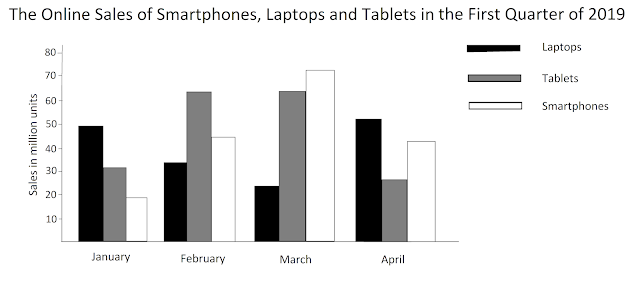CONTOH WRITING TASK 1 -PROCESS-
Halo, jumpa lagi dengan blog author yang hari ini akan kembali memberikan contoh Writing Task 1 IELTS. Salah satu jenis writing yang menjadi masalah bagi sebagian test takers adalah jenis proses karena menurut mereka proses dalam gambar yang diberikan biasanya sangat tidak familiar atau spesifik untuk rumpun ilmu tertentu. Seperti contoh dibawah ini, sebuah pembagkit listrik tenaga air yang mungkin, tidak semua orang memahami cara kerjanya. Namun sobat tidak perlu khawatir karena serumit apapun sebuah proses dalam Task 1 Writing, masih bisa dikerjakan dengan common sense meski dengan effort yang sedikit banyak ketika memahami gambar. Untuk materi Writing Task 1 bisa dilihat kembali di
Berikut ini contohnya:
Author's note: I used to have a graphic illustration for this writing. But it turns out that neither using such image nor providing a url directing to it is considered as fair use, and I really want to make this blog as legal as possible, and to avoid having problems with copyright infringement. Please use the keyword of each first sentence of my writing to find the illustration from the website of the legal copyright holder.
The picture describes the stages of producing electricity by using a hydroelectric dam. There are eight components described in the image which are reservoir, intake, penstock, turbine, generator, power house, long distance power lines, and the river. In general, the process of the production of electricity can be divided into three different stages consisting of input, process and output stages.
Firstly, input stage is done by storing huge amount of water in the reservoir. Intake functions to regulate the amount of water flowing through the penstock. It can be closed or opened depends on how much water is supposed to go through the penstock. Secondly, the process is done when considerable huge amount of water flows through the narrow path along the penstock and produce high pressure force that rotates the turbine. The turbine is connected to a generator located inside a power house. The generator functions to transform mechanical force produced by the turbine into electrical force. The output stage starts taking place when the electrical power produced by the hydroelectric dam is distributed through long distance power lines connected to the power house. The water that has gone through all necessary process is then released and goes back to the river.
Another way to explain the process
The picture explains the process of generating electricity using hydroelectric dam. There are eight components depicted in the picture. The process includes the use of natural force as well as human-made elements.
First of all, the water is dammed to create a reservoir. The reservoir increases the potential energy of the water. The water in the reservoir then goes through the intake, which functions to regulate the amount of water going to the next stages. The water which passes the intake flows to a narrow path called penstock. Penstock is used to increase the water pressure, so that it becomes powerful enough to rotate the turbine. The rotation of the turbine produces kinetic energy.
The kinetic energy produced by the turbine is turned into electricity a generator which is located inside a powerhouse. From the powerhouse, electrical energy is distributed through long distance power lines. The water that has gone through all process flows back to the river.
-Ross
Another way to explain the process
The picture explains the process of generating electricity using hydroelectric dam. There are eight components depicted in the picture. The process includes the use of natural force as well as human-made elements.
First of all, the water is dammed to create a reservoir. The reservoir increases the potential energy of the water. The water in the reservoir then goes through the intake, which functions to regulate the amount of water going to the next stages. The water which passes the intake flows to a narrow path called penstock. Penstock is used to increase the water pressure, so that it becomes powerful enough to rotate the turbine. The rotation of the turbine produces kinetic energy.
The kinetic energy produced by the turbine is turned into electricity a generator which is located inside a powerhouse. From the powerhouse, electrical energy is distributed through long distance power lines. The water that has gone through all process flows back to the river.
-Ross



Komentar
Posting Komentar